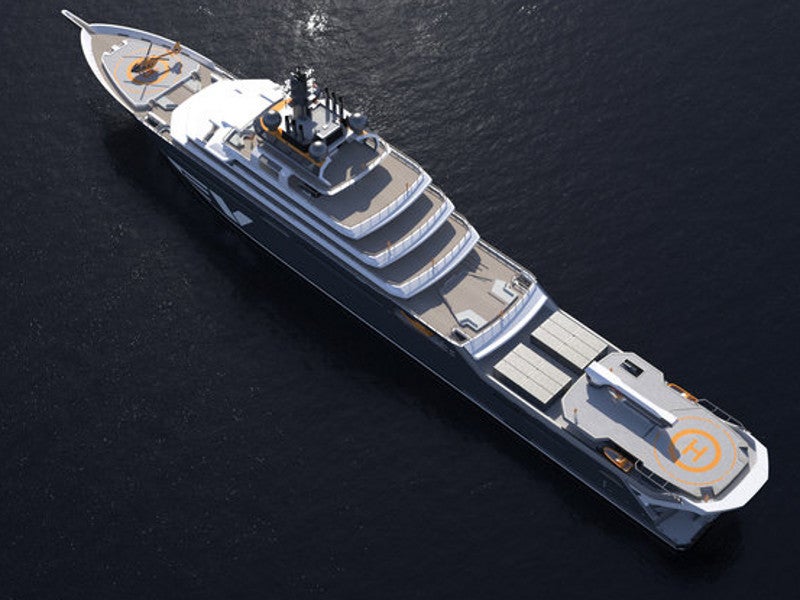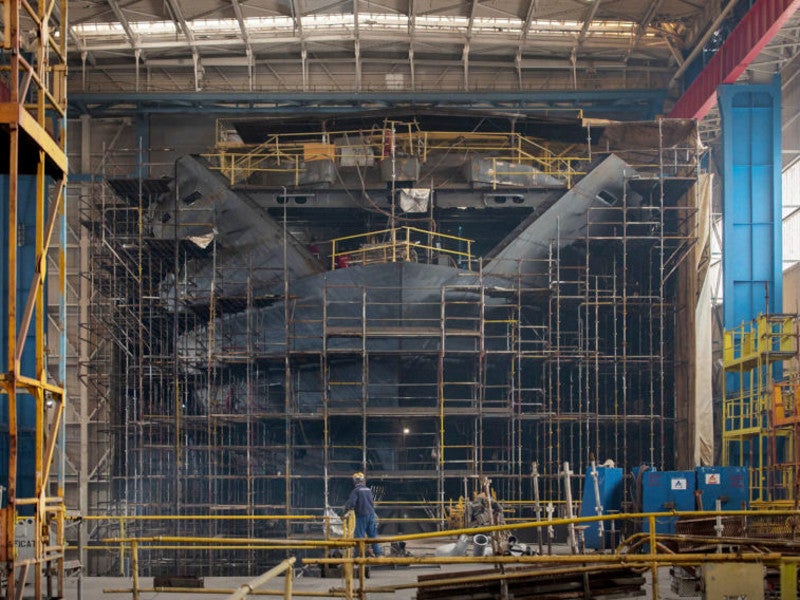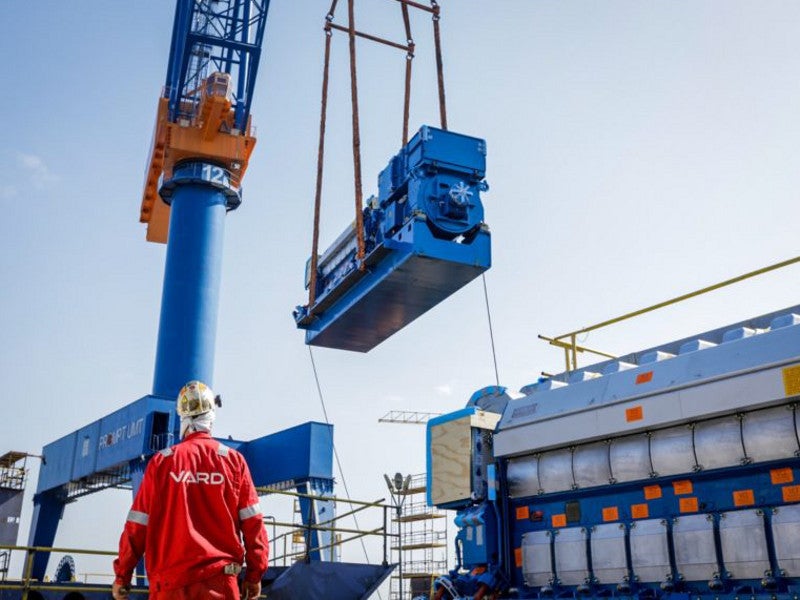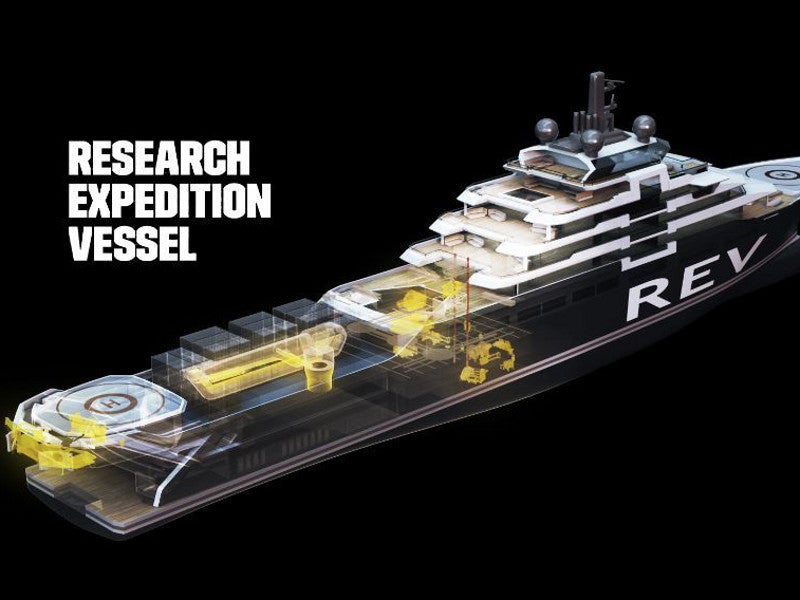Rosellinis Four-10’s Research Expedition Vessel is being developed at the VARD shipyard in Tulcea, Romania. Rosellinis Four-10 is owned by Kjell Inge Roekke, an industrialist based in Norway, and his family.
REV is expected to become the world’s most advanced research and expedition vessel upon completion in 2020. It will also be one of the world’s most environmentally friendly nautical vessels and is expected to head out for its first science mission in 2021.
The vessel will be customised for carrying out worldwide research and expedition activities. It is designed to provide for maximum performance during challenging and vulnerable environments.
The main purpose of the vessel is to conduct research and investigate the entire marine ecosystem with a focus on finding solutions to environmental challenges.
Rosellinis Four-10’s research expedition vessel design and tank capacities
Rosellinis Four-10’s research and expedition vessel will be equipped to monitor and survey marine areas, currents, the seabed, fish, animals, and plant life.
The vessel will have a length of 182.9m, a beam of 22m and draught of 5.25m. Designed to operate for 114 days, it will comply with the International Maritime Organization (IMO) polar code for ships to operate in Arctic and Antarctic waters.
It will have a gross tonnage of 17,440t and will be able to accommodate 90 people, including up to 36 guests.
The REV will have the capacity to store up to 1,156m³ of marine gas oil, 407m³ of potable water, and 100m³ of technical water. It will also be able to store 378m³ of clean wastewater and 1,680m³ of ballast water.
It will be equipped with overhead cranes that will be capable of lifting and launching equipment weighing up to 20t.
Features of the research and expedition vessel
REV will be equipped with a hi-tech incinerator system, which will burn waste in order to generate thermal power in the form of hot water. The underwater hydrophone system will be used for listening to ocean animals.
The vessel will feature a forward air sampling snorkel, which will provide a direct feed to the aerosol laboratory. The power block will also be equipped with a dynamic positioning system.
In addition to environmentally friendly solutions, the vessel will feature advanced laboratories, an auditorium, and a hangar for a remotely operated vehicle (ROV). An autonomous underwater vehicle (AUV) with direct access to the moon pool and a multi-functional cargo deck will also be installed.
The vessel will also feature mini-submarines and overwater drones, which enable researchers to take measurements from the atmosphere, as well as 6,000m below sea level. It will be equipped with a ballast water treatment system to prevent species cross-contamination across ocean zones.
Passengers on board will have facilities such as TV, recreational lounges, internet centre, gym, and a social area. There will be a hospital with a medic cabin.
SeaQ Green Pilot system developed by Vard Electro will be used to regulate COx, SOx, and NOx emissions, minimising the carbon footprint of the vessel.
Deck details
The decking system on the REV will be made available on the helicopter deck, miscellaneous outdoor areas, and on the stairs.
Advanced decking system will be provided for multiple sports activities, while swimming pools will feature a high-quality design with delicate colours and details.
Synthetic coatings or FSC-certified wood materials will be used to cover the decks.
Propulsion details of Rosellinis Four-10’s research expedition vessel
The vessel will be powered by four Wartsila 8L26 engines, which generate 2,520kW of power each at speeds of 900rpm. Two 3,200kW main propulsion motors will feature DNV-GL SILENT-R notation for minimising underwater noise pollution.
The motors can also be powered by an additional 3MW lithium-ion battery pack. The propulsion system will enable the vessel to sail at a maximum speed of 17.8k.
An 880kW controllable pitch tunnel thruster will be fitted aft and forward and an 880kW fixed-pitch drop-down azimuth thruster will be fitted forward.
Contractors involved
VARD Design secured the contract to design and build the new REV in May 2017, in partnership with Espen Øino.
In March 2019, OceanTec was engaged for the supply and installation of decking and swimming pool systems for the REV.
Evac is the supplier of Evac Complete Cleantech Solution featuring vacuum collection systems for sanitary waste, dry, and food waste collection and treatment systems, as well as wastewater treatment systems on board the vessel.
Seaonics was awarded the contract for the supply of high-end scientific winch package for the Rosellinis Four-10’s research and expedition vessel.





